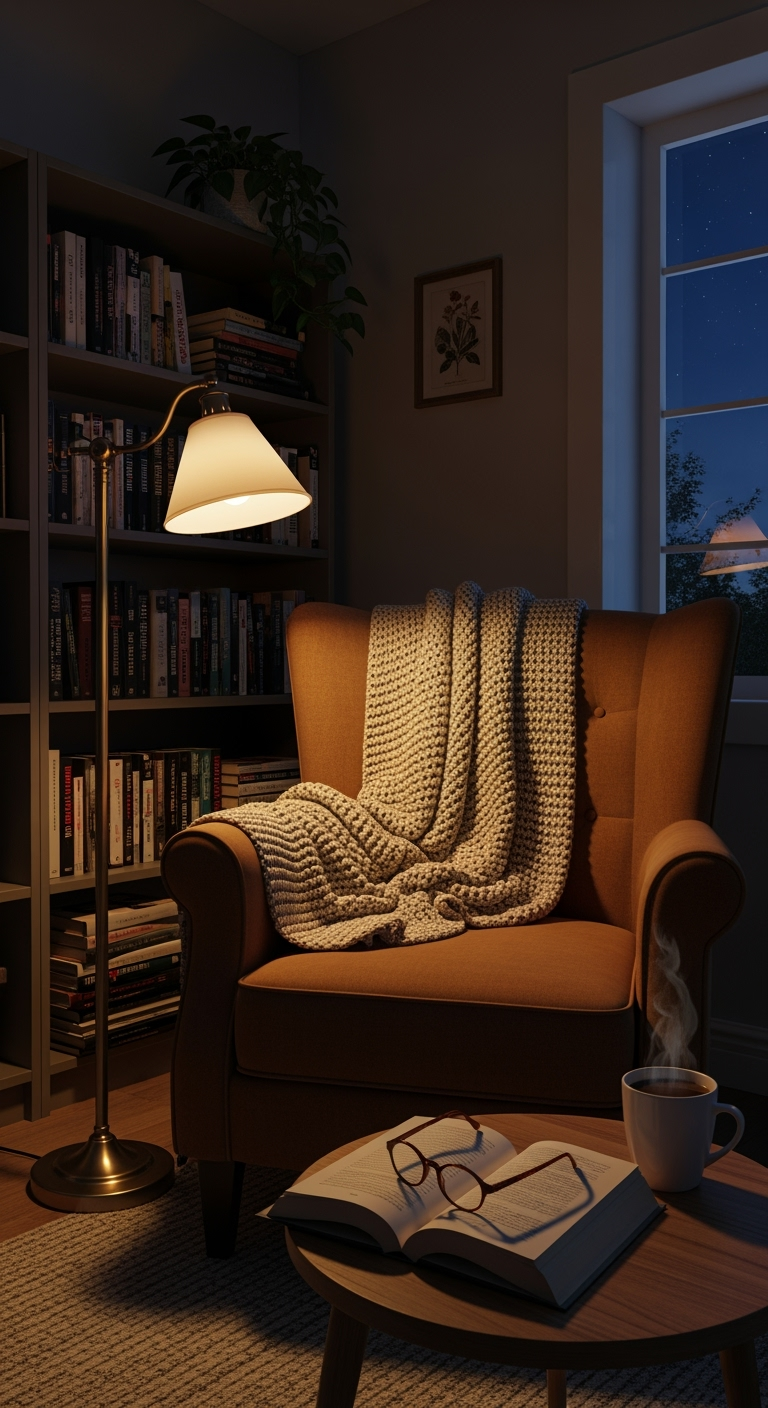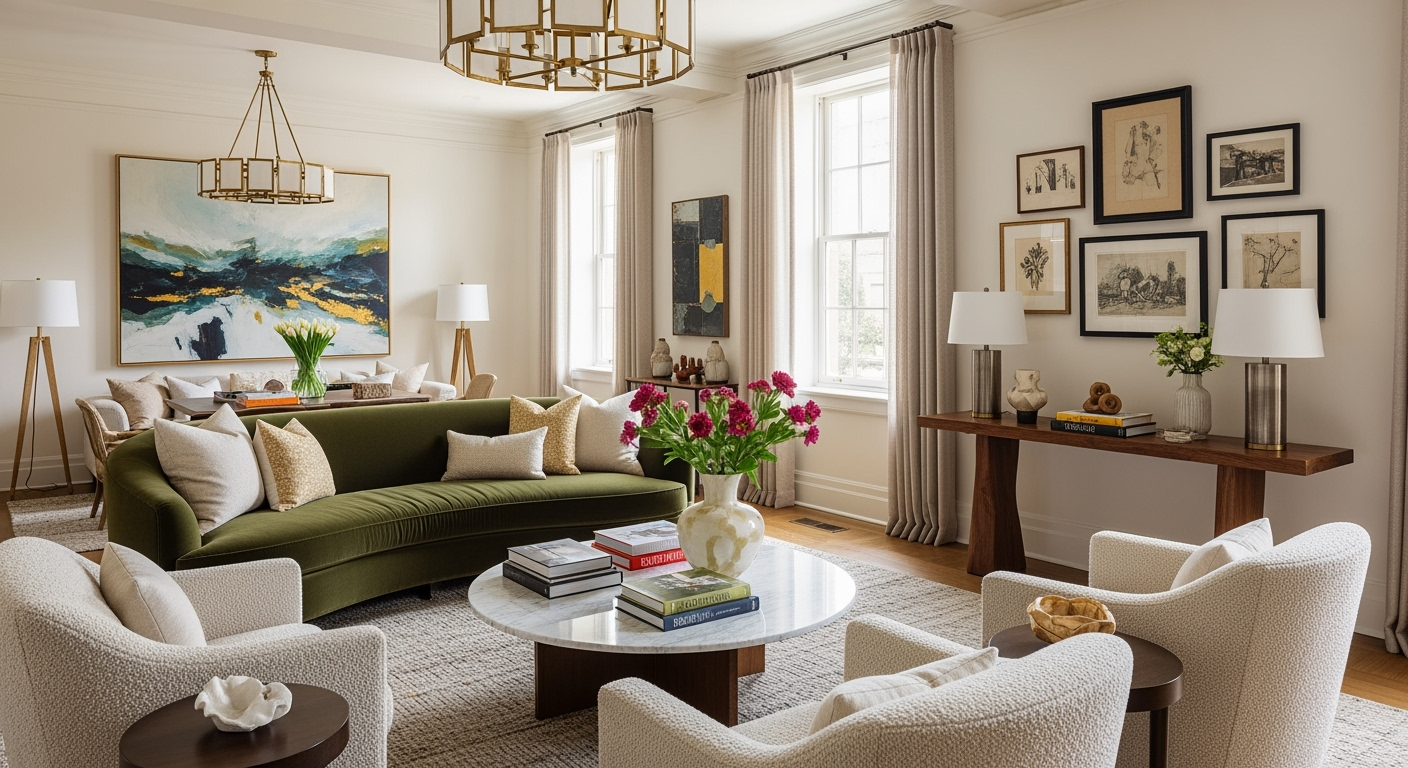Ever checked into a boutique hotel and immediately felt a wave of calm, style, and envy? That irresistible blend of curated luxury and intimate comfort is no accident. It’s a carefully crafted design philosophy, and the good news is, you don’t need a concierge or a minibar to bring it home.
The boutique hotel aesthetic is all about creating a personal, immersive experience. It moves away from generic, show-home perfection and towards a layered, story-rich environment that feels both luxurious and uniquely yours. It’s the art of making your home a sanctuary that wows guests and comforts you daily.
Ready to turn your abode into a five-star retreat? Let’s check in.
What Exactly is Boutique Hotel Style?
Before we dive into the “how,” let’s define the “what.” Boutique hotel decor isn’t a single theme; it’s a mood. It combines the high-quality finishes of a luxury hotel with the soul and character of a well-traveled, stylish individual. Key pillars include:
- A Strong Sense of Place: Boutique hotels often reflect their location. Think a Napa Valley inn using local wine barrels as decor, or a Miami Beach hotel dripping in Art Deco glamour.
- Curated, Not Cluttered: Every item has a purpose or a story. There’s a strong edit button applied—nothing is generic or there just to fill space.
- Textural Layering: This is the secret sauce. It’s the interplay of rough and smooth, hard and soft, matte and glossy that creates depth and irresistible tactile appeal.
- A Focus on Experience: The design prioritizes how a space feels. Lighting is flattering, seating is inviting, and the ambiance encourages relaxation and connection.
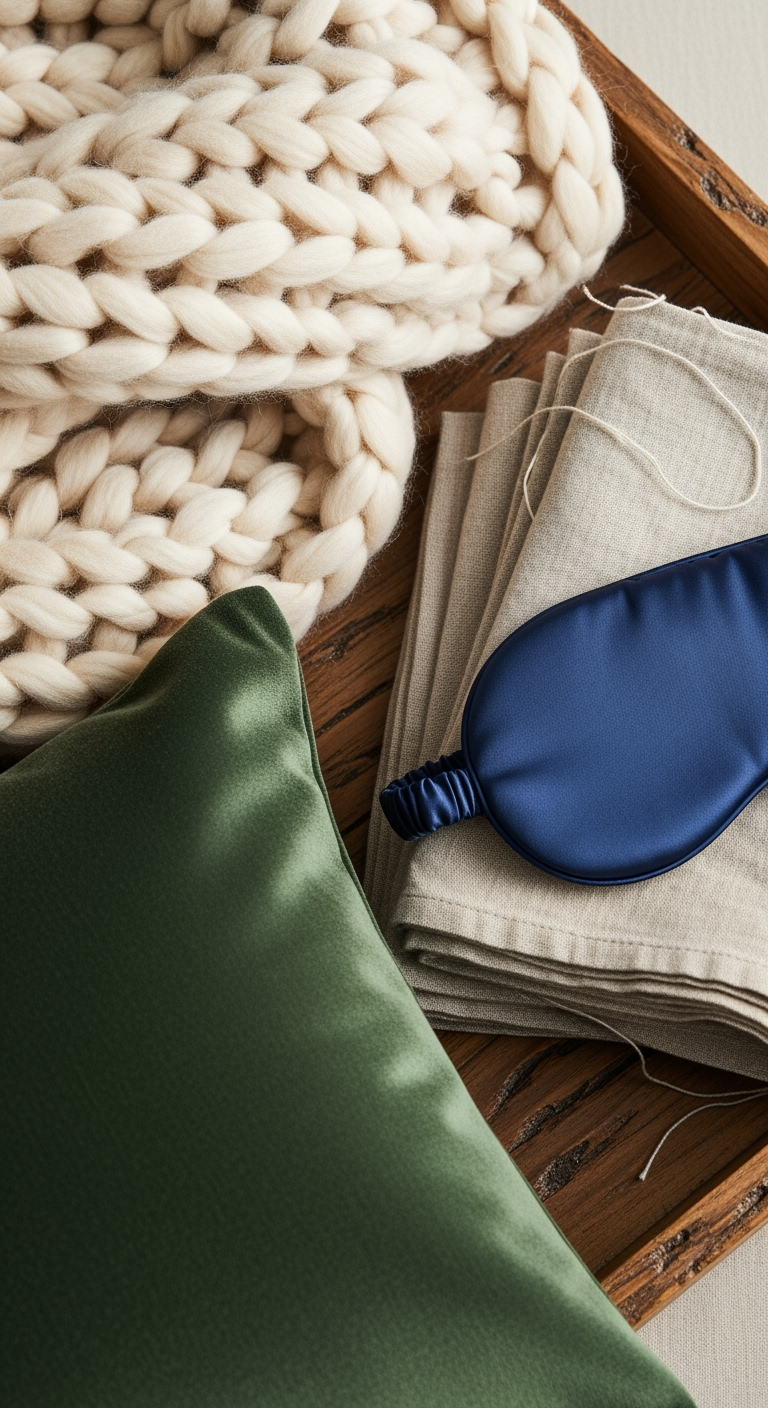
The 10-Step Guide to Achieving Boutique Hotel Style at Home
1. Master the Art of the Neutral Palette
Walk into any chic boutique hotel, and you’ll likely be greeted by a calming, neutral base palette. This isn’t about being boring; it’s about creating a serene canvas that allows key pieces to shine. Paint your walls in sophisticated, warm neutrals. Think shades of ivory, oatmeal, warm grey, taupe, or beige. This backdrop feels expansive, calming, and luxurious.
Use different shades of the same color family to add depth. For example, an oatmeal wall with a slightly darker linen sofa and a taupe rug.
2. Become a Texture Tzar
This is the single most important element. Neutrals risk feeling flat without texture. Texture adds visual weight, coziness, and that expensive, layered look. Mix a minimum of three textures in every room. Velvet cushions, chunky wool throws, faux fur blankets, silk curtains. Linen upholstery, a jute or sisal rug, raw wood side tables, seagrass baskets. Drape a beautifully textured throw over the end of your bed or the arm of your sofa. It looks inviting and adds instant style.
3. Invest in a “Signature Scent”
A boutique hotel is instantly recognizable by its scent. This subtle but powerful detail triggers memory and emotion, making your home feel considered and cohesive.
Ditch the overwhelming, synthetic air fresheners. Invest in a high-quality reed diffuser or a candle with a complex, natural fragrance. Scents like sandalwood, fig, white tea, linen, or vetiver are popular for a reason, they’re warm, clean, and sophisticated. Place your diffuser in a high-traffic area like an entryway or living room. Light candles in the evening to signal time to unwind.
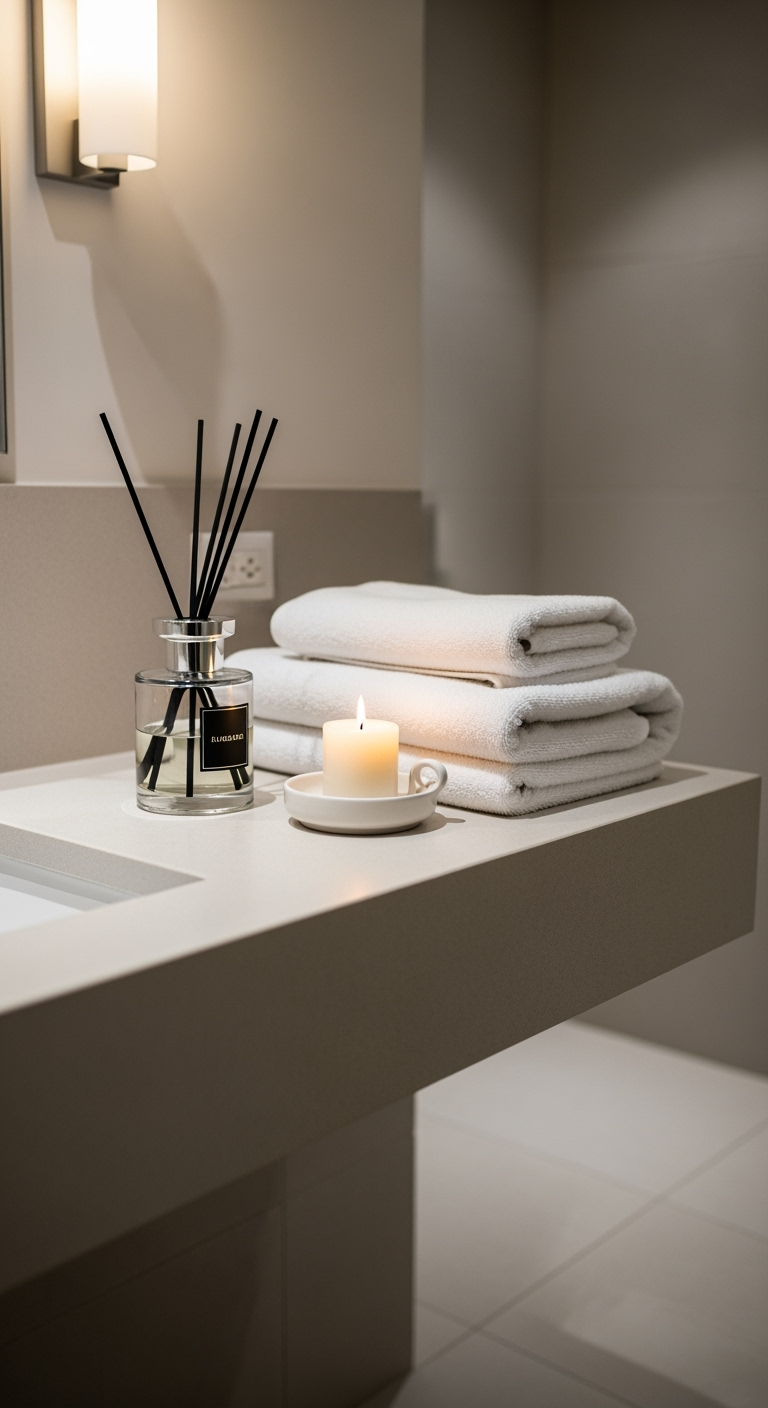
4. Elevate Your Bedding to Five-Star Status
The bed is the undisputed hero of any hotel room. It’s a cloud-like oasis you can’t wait to sink into. Replicate this at home.
A fitted sheet, a flat sheet, a duvet inside a cover, and then decorative layers. Opt for high-thread-count cotton percale (for a crisp, cool feel) or Egyptian cotton (for a soft, warm feel). Don’t overlook linen, it’s breathable, gets softer with every wash, and looks effortlessly chic. A mix of sleeping pillows and decorative shams in different sizes and textures (e.g., two standard shams, two European squares in front, and a lumbar pillow or two in a contrasting fabric). Give your bed that professional “hotel tuck” and finish it with a throw blanket at the foot of the bed.
5. Curate a Gallery Wall with Soul
Boutique hotels avoid generic mass-produced art. Their walls tell a story through curated photography, local artists, or unique finds.
Skip the generic big-box store prints. Instead, source artwork from local artists or art fairs. Frame your own travel photography or vintage postcards. Lay out your arrangement on the floor first before hammering any nails. Aim for a collection that feels personal, not perfect.
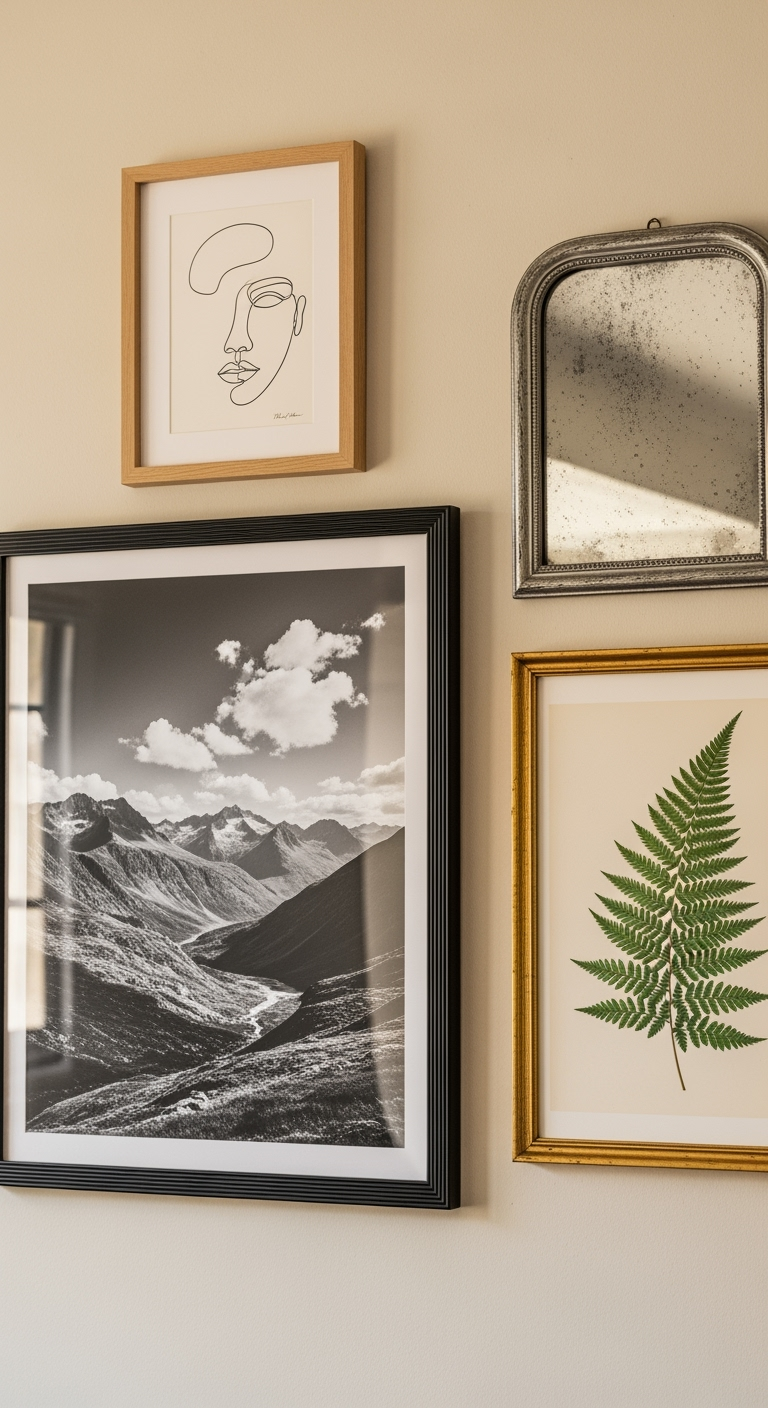
6. Layer Your Lighting for Ambiance
Overhead lighting is functional but often harsh and unflattering. Boutique hotels use layered lighting to create mood and intimacy. Incorporate these three layers:
- Ambient Lighting: The general light in a room (often from ceiling fixtures). Dimmer switches are non-negotiable here!
- Task Lighting: Light for a specific purpose, a reading lamp next to an armchair, a pendant light over a kitchen island.
- Accent Lighting: The magic layer. This includes table lamps, floor lamps, wall sconces, and LED strips under cabinets or behind headboards. This layer creates pools of light and shadow, making a room feel cozy and dynamic.
Use warm-white bulbs (2700K-3000K) throughout your home. They provide a soft, golden glow that is infinitely more flattering and relaxing than cool blue tones.
7. Embrace the Statement Mirror
Mirrors are a workhorse in boutique design. They make spaces feel larger, reflect light beautifully, and serve as stunning sculptural pieces.
Go beyond the basic functional mirror. Look for a mirror that acts as a piece of art. An oversized leaning floor mirror, a sunburst mirror, one with an interesting organic shape, or a frame in a bold material like black iron or natural rattan. Place a statement mirror opposite a window to maximize natural light and make the room feel instantly brighter and more open.
8. Style Your Surfaces with a Light Touch
Cluttered surfaces are the enemy of a serene, hotel-like vibe. The goal is styled, purposeful, and elegant.
Adopt the “rule of three.” Group items in odd numbers for a more dynamic look. On a console table, that might be a lamp (1), a stack of books (2), and a small vase (3). On a nightstand: a lamp, a book, and a small tray holding a watch or glass of water. Use trays to corral smaller items on larger surfaces like coffee tables or dressers. It instantly creates order and a sense of intention.
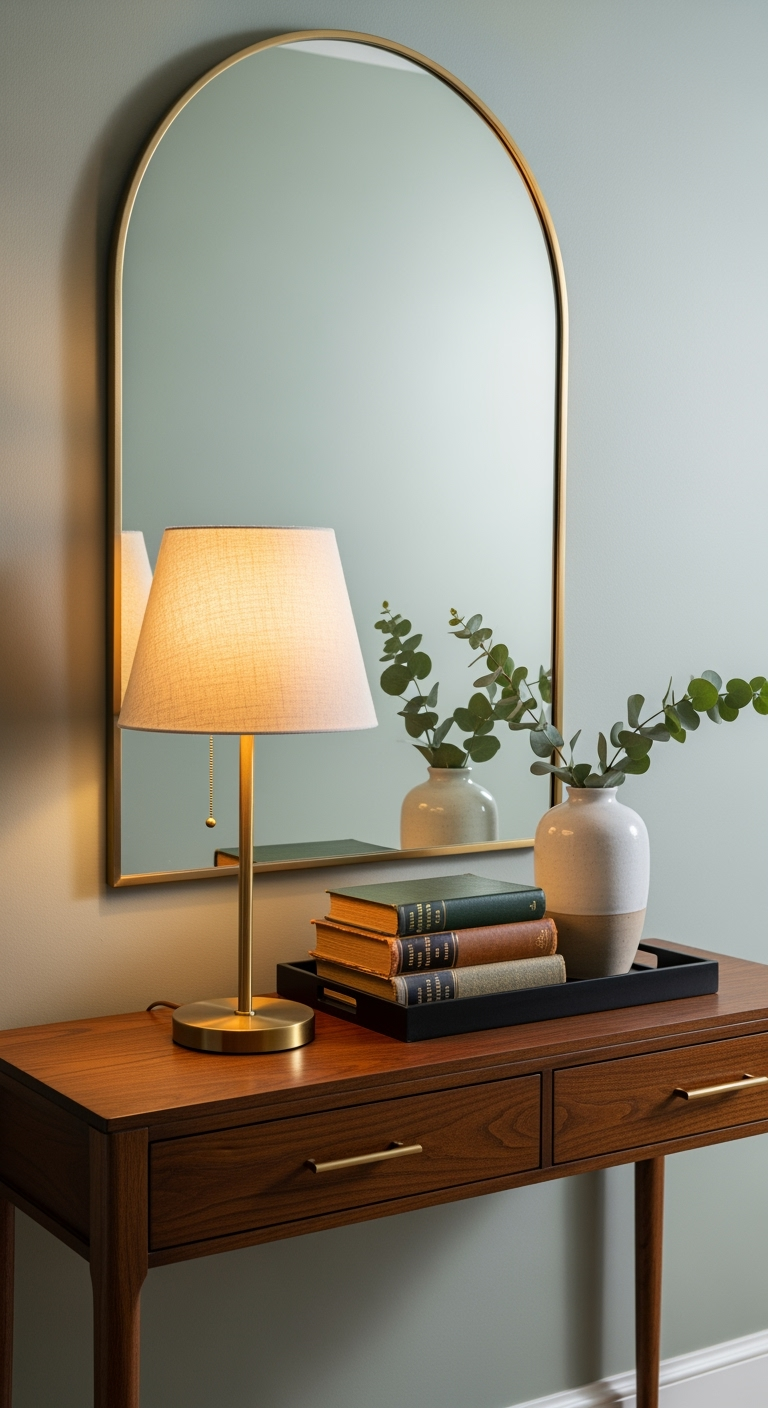
9. Incorporate Natural and Organic Elements
Bringing the outside in adds life, freshness, and a timeless organic touch that prevents a space from feeling too designed or sterile.
A mix of large floor plants (like a Fiddle Leaf Fig or Bird of Paradise) and smaller tabletop varieties (like a ZZ plant or Pothos). They purify the air and add vibrant greenery. Fresh flowers in a simple vase are the ultimate luxury. A single stem in a bud vase can be just as effective as a large arrangement. If you lack a green thumb, high-quality faux plants have come a long way. Just dust them regularly!
10. The Finishing Touch: The “Wow Factor”
Every great boutique hotel has that one unforgettable element—a dramatic staircase, an eclectic chandelier, a stunning piece of vintage furniture. This is what makes it memorable.
Allow yourself one statement piece per room. This could be:
- An antique rug with a fascinating history and pattern.
- A bold, sculptural light fixture over your dining table.
- A piece of art you absolutely fell in love with.
- A vintage bar cart stocked with beautiful glassware.
- A boldly colored velvet armchair in an otherwise neutral room.
Your “wow factor” doesn’t have to be expensive. It could be a unique vintage find you restored yourself, which adds even more story and character.
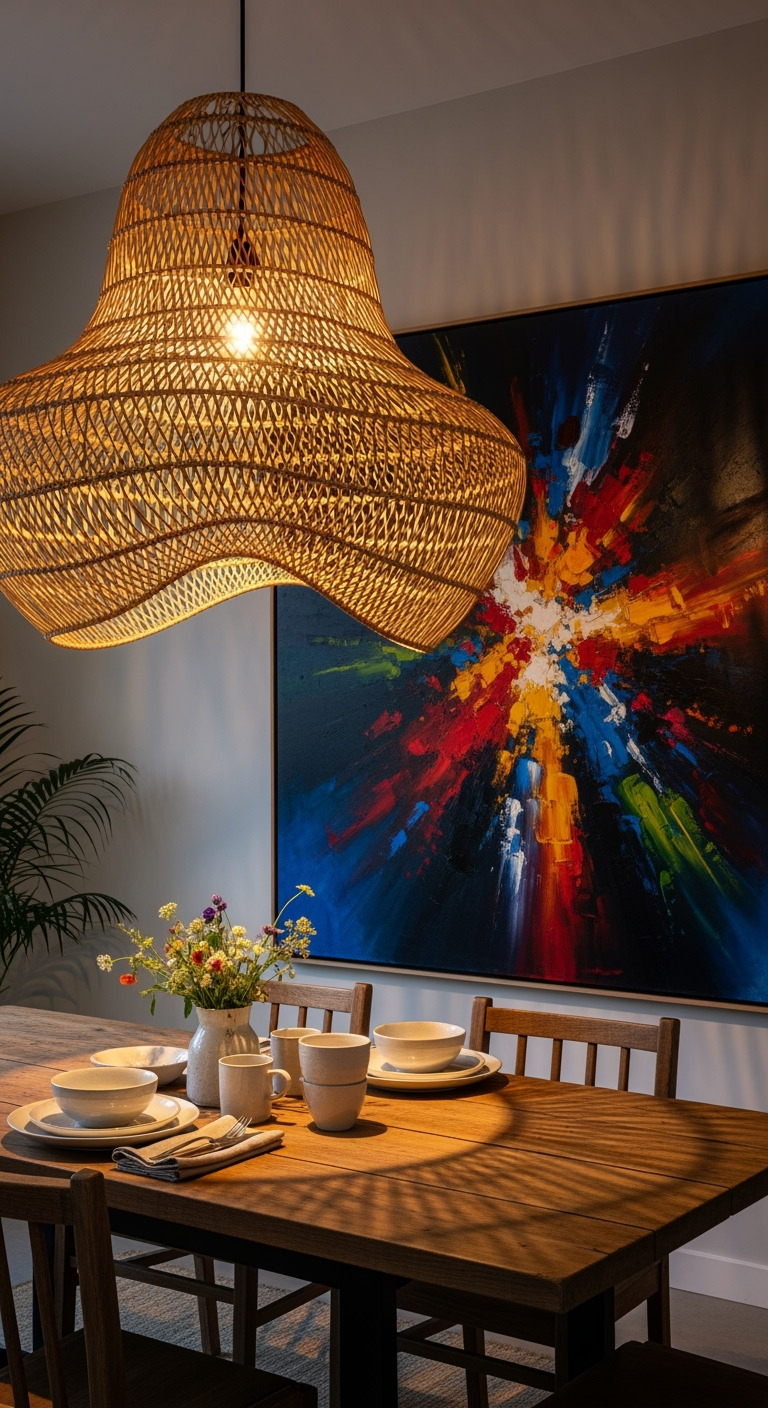
Room-by-Room Quick Tips:
- The Bedroom: Focus on the bed (see point #4), excellent blackout curtains, and clear surfaces. Hotels never have clutter on the nightstands.
- The Bathroom: This is a spa. Invest in fluffy white towels (rolled or neatly folded), a beautiful soap dispenser (not the plastic bottle!), a tray for your products, and a small plant or orchid. Keep counters as clear as possible.
- The Living Room: Create a conversation area with furniture that encourages people to talk. Ensure plenty of surface lighting (lamps) and have throws and cushions easily accessible for ultimate comfort.
- The Entryway: Make a strong first impression. A console table with a mirror above, a small lamp for warm light in the evening, and a bowl for keys creates an instant “welcome home” feeling.
What to Avoid
- Matchy-Matchy Furniture Sets: They lack character and look like you bought a showroom in one go. Mix eras and styles for a collected feel.
- Over-Theming: A “theme” (e.g., “tropical” or “nautical”) can feel kitschy. Instead, suggest a theme through colors, textures, and a few key pieces.
- Clutter: Surfaces buried in mail, toys, and random items are the antithesis of a serene retreat. Embrace hidden storage solutions.
- Harsh, Cold Lighting: That bright blue LED has to go. Warmth is key.
Your Home, Your Sanctuary
The ultimate goal of boutique hotel style isn’t to create a museum or a perfect, untouchable space. It’s to design a home that feels like a restorative, beautiful, and personal retreat. It’s about surrounding yourself with things you love that tell your story, all while prioritizing comfort and sensory experience.
So, dim the lights, light that candle, fluff those pillows, and enjoy your very own boutique hotel. You deserve it.
